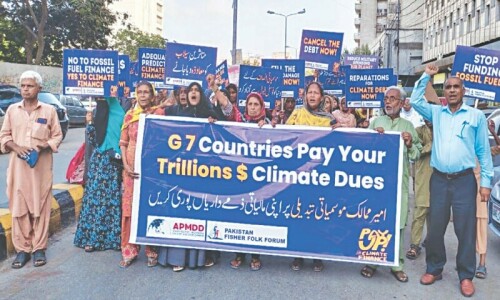ISLAMABAD: Chief Justice of Pakistan Mian Saqib Nisar on Tuesday dropped hints that he may lead a campaign to raise awareness about the alarming rate of population growth in the country and ordered the government to convene a meeting of the Council of Common Interests (CCI) within 10 days for formulating a policy on arresting the population bomb.
The chief justice, who was heading a three-judge Supreme Court bench, also gave a clear indication of arranging a seminar on population growth, similar to the one recently held on the SC premises on the looming water crisis.
Experts from all over the country will be invited to the population seminar.
The Supreme Court had taken suo motu notice the alarming rate of population growth in the country.
Top judge asks govt to call CCI session in 10 days to formulate policy for arresting population growth
During the hearing, Additional Attorney General Nayyar Abbas Rizvi furnished a report prepared by a task force constituted on the orders of the apex court. The task force was headed by Dr Fida Muhammad Khan, formerly of the Federal Shariat Court, and included, among others, Shahnaz Wazir Ali, Dr Attiya Inayat Ullah and Dr Sania Nishtar.
The terms of reference of the task force were to identify short- and long-term actions and cost-effective strategies for accelerating family planning programme at the national, provincial and district levels and to come up with strategies for engaging policy-makers and other stakeholders for increased ownership and investment in the family planning and reproductive health.
The report, which will be placed before the CCI after the review of the apex court, has expressed concern that Pakistan’s population will double over the next 30 years and is projected to increase to 285 million by 2030.
Currently, Pakistan has become the sixth most populous country in the world with a population of 207 million growing at an intercensal rate of 2.4 per cent per annum between 1998 and 2017.
The task force has asked the government to reduce the population growth rate, lower total fertility rate and increase contraceptive prevalence rate.
The report states that in Pakistan the total expenditure of human (as a percentage of the gross domestic product) has remained stagnant.
The Health Vision 2016-25 acknowledges the high burden of disease caused by increased population and need to narrow the gap, yet it does not offer any tangible policy or programmatic intervention to address these challenges, specially to reduce mother and infant mortality rates and dissociating women from resorting to induced abortions, thus diluting the common benefits of family health and well-being.
The task force says the recent national nutrition survey has noted that approximately 60pc of women and children in the country are malnourished. Many Pakistani children are faced with long-term nutritional deprivation due to poverty, balanced food insecurity, poor health services, illnesses linked to hygiene such as diarrhea, and improper feeding practices.
About 44pc of Pakistani children suffer from stunting, indicating chronic malnutrition with greater regional inequalities. The fast-growing population coupled with prospects of adverse climate change, environment degradation, deforestation and depletion of water resources are putting Pakistan in water stress situation.
The proportion of children who suffer from wasting (15pc) indicates acute malnutrition that exceeds the international emergency threshold.
A fifth of pregnant women and children under five have severe vitamin-A deficiency, and 62pc of children under five are anemic, the report regrets, adding that only 38pc of children are exclusively breastfed that too only for the first six months of life.
The nutritional inadequacies in Pakistan hinder the development of the intellectual faculties of schoolgoing children and young adults consigned to such diets and are likely to perpetuate intergenerational inequalities of opportunity to achieve their aspirations for desired income and comfortable living.
The report fears that such a high level of population growth is unsustainable and has already eaten into the modest gains made in terms of socio-economic development.
The rapidly growing population has direct negative implications for adverse climate change, environment degradation, deforestation and above all the decline in water availability per capita, putting Pakistan in water stress situation, the task force says.
The situation will exacerbate food security and threaten the county’s sustainable development prospects, it warns.
Published in Dawn, October 31st, 2018

















































